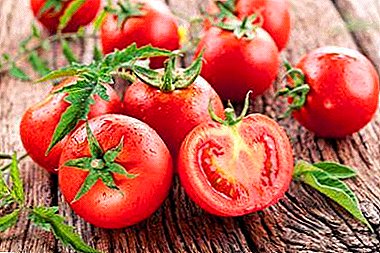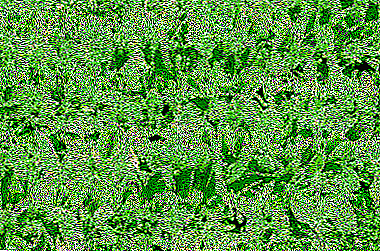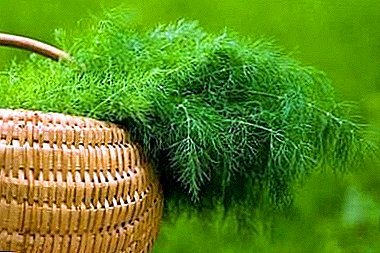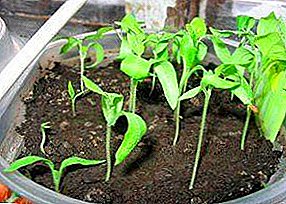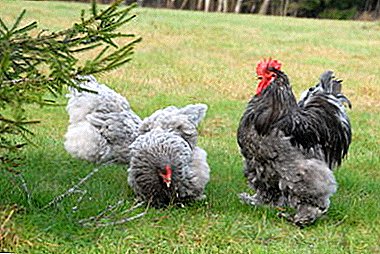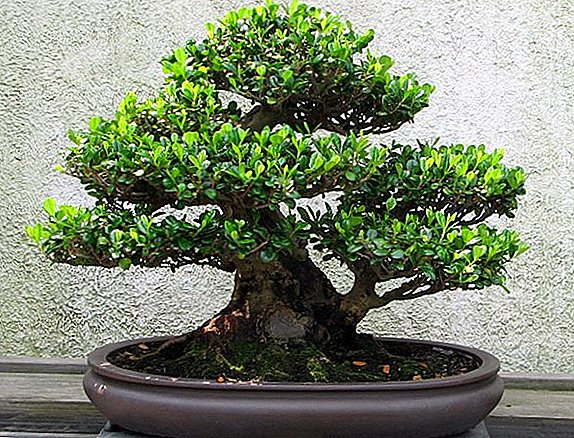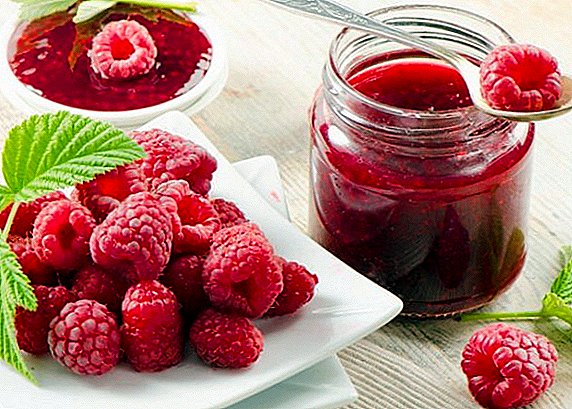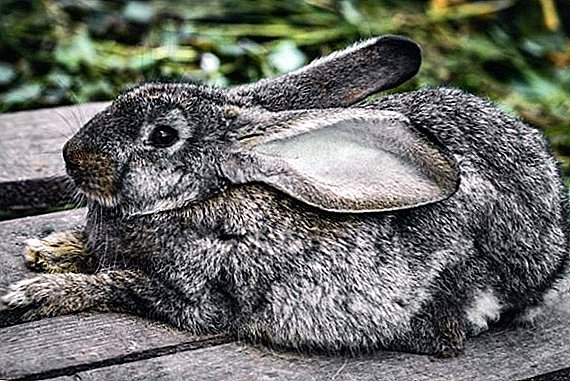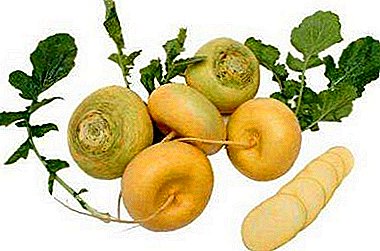
In Russia, they have long since grown turnips - this vegetable is stored for a long time, it is easy to prepare and, moreover, it has a rich vitamin and mineral composition that helped the peasants maintain their health during the harsh long winters.
Today it has again become popular to cultivate this crop in gardens and even at home. But turnips are demanding for growing conditions - with a lack of soil fertility, moisture and light forms rough and bitter fruits.
The article tells about the intricacies of self-growing turnip at home and in the country.
Features and differences from the cultivation of other vegetables
Turnip grows on light cultivated and fertile soils. Fresh manure for fertilizer in the spring is not suitable - the keeping quality of the fruits deteriorates, and the hollowness of the fruit may form. The forerunners are all garden plants, except cabbage. Turnip can coexist on bed 1 with turnip, radish and radish.
For European radish, the optimum acidity of the soil is 6.7. Japanese subspecies grow well on soils with a pH of 5-5.5. Long turnip roots require deep digging of the soil.
How to choose the right seed?
Two types of turnip are grown in Russia - Western European and Japanese.
Table with characteristic varieties
| Title | Mass (g) | Fruit shape | Pulp |
| Early 50 days | |||
| Geisha | 220-255 | Rounded | White, dense, juicy |
| Beetle | 230-245 | Rounded | White, tender, juicy |
| Snowball | 200-250 | Rounded | White, juicy, tender |
| Medium early 55 days | |||
| Merchant | 220-235 | Flat | Juicy, unreliable |
| Petrovskaya 1 | 200-260 | Flat rounded | Yellow, juicy |
| Mid-season 55 -70 | |||
| Purple with white tip | 80-100 | Cross narrow elliptical | White, tender, juicy |
| Venus | 150 -200 | Flat | Yellow, tender, juicy |
| Palette | 100-300 | Yellow, juicy, tender | |
| Pelagia | 210 | Flat rounded | Yellow, juicy tender |
| Late-ripened 70 -80 | |||
| Golden ball | 210-240 | Round oval | Yellow, dense, juicy |
| Comet | 180-250 | Semi-long, blunt root vegetable | White, tender, juicy |
1 g contains up to 900 round, red-brown turnip seeds. Seed buy in specialized stores. Cost for Moscow, St. Petersburg from 16 rubles for 1 g. Moscow online stores offer delivery of seeds to other cities of Russia by courier, Russian post with payment according to tariffs, as well as self-pickup from the nearest point of order.
A photo
In the photo below you can see the look of turnip seeds and the plant itself.
These are turnip seeds:

And this - shoots:

The following photos - adult plant:


Secrets of agricultural cultivation at home and in the country
Turnip seeds begin to germinate at t 2-3 ºC. Shoots appear on the 4th day at t 18-20 ºC. Favorable temperature for the start of root formation is 12 -15 ºC. For turnips choose a place well lit by the sun.
At home
To grow a vegetable at home:
- In the autumn, a deep soil digging is done and 4 kg of humus or compost are added per 1 m² with the addition of 50 g of nitrophoska.
- In a peat soil per 1 m² should add 1 cup of wood ash.
- In the spring, before sowing, the earth is well loosened to a depth of 5-6 cm.
- Seeds are pre-soaked for half an hour in hot water at t 50 ºC.
- Then they are mixed with sand in the ratio of 1: 5 and sown to a depth of 1.5-2 cm.
- The soil is rolled down. Thin out in the phase of 2-3 true leaves - in 20-25 days.
- Leave a distance between seedlings 3-5 cm.
- When re-thinning, the distance is increased to 10 cm. After the final thinning, 40-50 plants should remain per square meter.
- A turnip, planted in the ground in the spring, watered as needed.
- Summer seeding turnips are watered regularly, especially well in the first month of growth. During the season, loosening aisle several times and weeding.
- Twice fed complex fertilizers.
Important! 2-3 weeks before harvesting, the roots stop watering.
In the greenhouse
In the greenhouse more often grow more thermophilic Japanese subspecies of turnips.
- In heated greenhouses, turnips are sown in the 2nd or 3rd decade of March, with 2-3 seeds per well.
- Sowing scheme in the greenhouse 35x15 cm.
- Shoots weed and thinned - leave the most viable plants.
- Maintain the optimum temperature in the seedling phase - 13-15 ºC, during the growth of root crops - 15-18 ºC.
- Relative humidity is about 65%. Watering is carried out with warm water - 20-25 ºC.
- Harvesting of ripe root vegetables produced in two or three doses.
In the garden under the film
 Turnip will give an early harvest, if it is planted under the film on high ridges in the second half of April.
Turnip will give an early harvest, if it is planted under the film on high ridges in the second half of April.- Sow rows arranged at 15 cm from each other. On 1m ² sow 2 g of seeds and cover with foil.
- The film is removed when root seedlings germinate.
- When a second true leaf appears, thin it out, leaving about 5 cm between the plants.
- Cleaning is carried out selectively, as soon as the fruit reach a diameter of 4 cm.
In the open ground in the Moscow region and other regions of the Black Earth Region
In the open ground in the suburbs spring sowing for summer consumption is carried out in April-May - as soon as the soil reaches physiological maturity.
The second seeding for winter storage is done in July - at this time the second generation of cruciferous flea disappears, from which turnip especially suffers. In cool climates and on heavy clay soils, turnips grow best on ridges or ridges.
We offer to watch a useful video on how to properly plant a turnip in the open ground:
Problems and solutions
- At violation of the mode of watering bitter and rough fruits are formed. Regular weeding is necessary - overgrowing with weeds leads to stretching of the root and premature rifling.
- If the leaves turn yellow and grow poorly, the plants are fed with urea - for 1 m² 10-15 g.
- Often young leaves bend, they have a growing point and roots dying. 1-2 root supplements with complex fertilizers with the addition of micronutrients or sheet supplements with micronutrients will help.
- You can not perederzhiv ripe fruits in the ground - they become rude and tasteless.
Harvesting and storage
Summer harvest produce selectively - choose fruits that have reached 6-8 cm in diameter. In autumn, in September-October, before the onset of frost, clean in one step. Cut the tops, slightly shorten the taproot and leave it for a while to dry on the ground.
Before putting the turnip in storage, spray it with onion peel extract. Turnips are stored in basements in boxes, sprinkled with sand. Can be stored in boxes with polyethylene liners.
Microclimate during storage of turnips:
- temperature 0-1 ºC;
- relative humidity 90-95%.
Ripened roots with cut leaves do not lose their freshness for 5 months. If the temperature rises to 4 ºC and higher, root crops are massively affected by diseases. Products will remain fresh for 4-5 months, if you dip the washed fruits for 2 seconds into hot melted paraffin with the addition of a small amount of beeswax.
Then you can watch a video about harvesting and storage of turnips:
Diseases and pests
 Cruciferous flea inflicts the greatest damage to young seedlings of turnip. Over-grown adult beetles feed on weedy cruciferous at first, then move on to young shoots of turnips - damage the leaves. The larvae of beetles deposited in the ground damage the roots.
Cruciferous flea inflicts the greatest damage to young seedlings of turnip. Over-grown adult beetles feed on weedy cruciferous at first, then move on to young shoots of turnips - damage the leaves. The larvae of beetles deposited in the ground damage the roots.
Departure cabbage flies in the Moscow region accounted for the first half of May. The larvae of the cabbage fly damage the stems and roots, digging into the roots. Leaves wither, root crops become inedible. To scare flies among the turnips planted celery.
Cabbage moth, white backyard, cabbage scoop lay eggs on the underside of the leaves. The larvae eat away the holes, destroying the entire leaf blade.
Control measures:
- autumn deep soil digging;
- timely watering;
- plant strengthening feedings;
- dusting plants with wood ash in half with road dust, or tobacco dust mixed with ash or lime 1: 1.
The most common diseases are fomoz, kila and bacteriosis. As a result of the defeat by the keel on the roots, growths and swellings are formed When fomoze leaves acquire a blue tint, covered with brown spots. In the roots, the disease manifests itself in the autumn in the form of dry spots and dents. Vascular bacteriosis is manifested in the withering of leaves and the death of fetal tissue.
Control measures:
- deep digging ground;
- soil chalking;
- destruction of diseased plants;
- soil change;
- root dressing complex fertilizers.
During the growing season, pests should be destroyed, who spread the disease.
Care Tips for Preventing Problems
To warm up the soil for early sowing of turnips, the land is covered with foil for several days. To prevent keel formation, acidic soils are lime.
To get sweet, sugary fruits with a high content of vitamin C, resistant to bacterial diseases, before sowing, a boron trace element in the form of borax is introduced into the ground - 1.5 g / 1m².
Do not overdry the soil, as rain after a long drought causes cracking of fruits. The turnip, sown in July, forms the roots with the greatest mass, yield and excellent taste.


 Turnip will give an early harvest, if it is planted under the film on high ridges in the second half of April.
Turnip will give an early harvest, if it is planted under the film on high ridges in the second half of April.